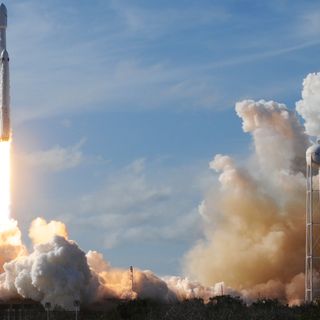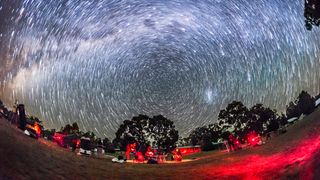While the democratisation of space has had undeniable benefits, the rate of sending new satellites into orbit is overwhelming our ability to manage them. The US military is tracking around 18,000 space objects, but there are an estimated 170 million objects smaller than 1cm that are impossible to track. The ultimate danger of all of this space junk is collision.
According to the well-known Kessler syndrome, two objects colliding will generate more debris, leading to a cascading cycle of never-ending collisions and further debris. In this hypothetical but catastrophic scenario, we would lose all assets in space, such as communications satellites, and new launches would be impossible.
Space junk is a real security threat: in 2017, the US military logged 308,984 potential collisions, and 655 of those were “emergency-reportable”, says Diana McKissock of the US Air Force. This is why the United States is prioritising space junk management. In June 2018, President Trump signed a space policy directive which urged the United States to lead space traffic management, shifting responsibility of space tracking to the Department of Commerce as a reflection of growing private sector interests. The House Science Committee approved a bill appropriating millions of dollars for the creation of a situational space awareness program to manage space junk. As the commercial space market matures, the United States is clearly intent on protecting their increasingly vulnerable space assets.
Australia’s population, resources and government are considerably smaller than the United States, but its geographic and comparative advantages brings significant opportunities to further develop its niche expertise and benefit from US collaboration on this issue.
Australia’s population, resources and government are considerably smaller than the United States, but its geographic and comparative advantages brings significant opportunities to further develop its niche expertise and benefit from US collaboration on this issue. The most distinct advantage is in Australia’s clear weather and vast land to place ground stations to maintain knowledge of where objects are in space and their behaviour, also known as Space Situational Awareness (SSA).
Australia’s technical capability for SSA is already well-established, with space object tracking via laser technology at the Mount Stromlo Observatory as well as a joint Australia-US ground space station in Exmouth, WA which employs a sophisticated radar facility. Australia’s capability is only growing: Curtin University and Lockheed Martin Space are collaborating on a potentially “disruptive” satellite tracking project using meteorite tracking technology. Curtin University is also working with an Adelaide space start-up to develop satellite tracking technology using existing radio waves.
Evidently, the United States is already collaborating with Australia on SSA. The space surveillance sensors in Exmouth are in fact operated with the US Air Force, which relocated their radars from New Mexico to WA in 2014. Existing cooperation gives a good foundation to consolidate the Australia-US partnership and to develop a more advanced SSA program. As the recent USSC report “Space for Growth” suggested, close US-Australian cooperation is in both of their interests: Australia gains access to technology and support from the major global space power and the United States can better maintain its dominance against rising space powers.
Space for growth: Prospects for Australia-US civil space cooperation

While today’s commercial space industry brings immense opportunities, it also adds urgency to the space junk problem. Managing space junk is in the interest of all parties – space companies must protect their own assets as they launch more satellites into space and big powers like the United States are stepping up to the ‘Space Cop’ role. Australia evidently has the niche but crucial capabilities to help solve the unavoidable space junk problem, making it more important than ever to leverage Australia’s advantages and establish greater partnerships with the United States and other space companies.






